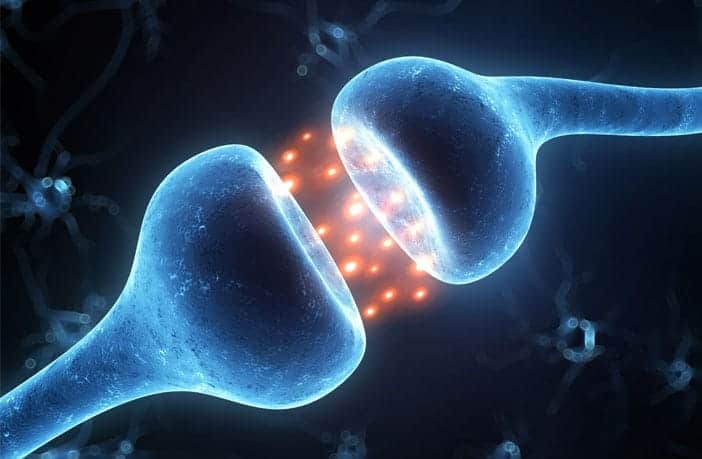- The Origins Of Motivation (Hint: It’s Neuroscience)
- What Causes Your Dopamine To Spike
- How To Hack Your Dopamine To Boost Your Productivity
- More Physical Tricks To Kick Your Dopamine Into High Gear
- Take The First Step
- TL;DR
- Popular Questions
- Glossary
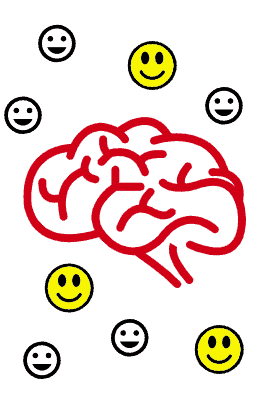
I spent an hour on this opening paragraph.
The hour wasn’t time well spent, mind you. Sure, I was working — writing, deleting, tinkering with words here and there — but my one-paragraph-per-hour pace wasn’t out of indecisiveness as much as a lack of motivation.
I spent
- five minutes on the email
- ten minutes on Instagram
- and fifteen minutes doing who-knows-what on Tumblr
(Just kidding, I know exactly what I was doing: watching cat videos.)
Sound familiar?
Motivation is a tricky thing to corral. Tricky, but not impossible.
The origins of motivation (hint: it’s neuroscience)
To trace the source of motivation, let’s begin in the human brain where neurotransmitters spark chemical messages to keep us alert and on task.
Neurotransmitters carry chemical messages that play out in your brain and affect the rest of your body.
One neurotransmitter that plays a role in the science of motivation is dopamine. Dopamine’s chemical signal gets passed from one neuron to the next, and between those two neurons, dopamine interacts with various receptors inside the synapse.
This arrangement becomes much more complicated when you multiply the effect through the entire brain. Consider: there are different types of receptors, neurons, and pathways that neurotransmitters can take. Things get complicated fast.
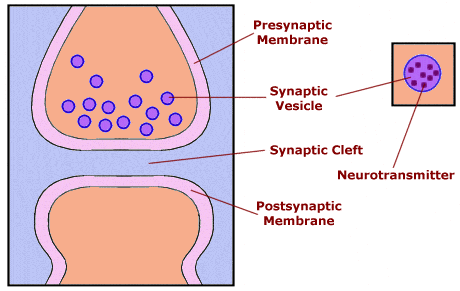
[Source]
For motivation specifically, it matters which pathway dopamine takes. The mesolimbic pathway, which comes from the middle of the brain and branches to various places like the cerebral cortex, is the most important reward pathway in the brain.
Your Brain on Dopamine offers a deeper understanding of how amino acids influence the neural pathways that underlie your desires and pleasures.
Dopamine receptors, like D1 and D2, have distinct functions and are critical players in the intricate dance of neurotransmitter signaling.
One of the mesolimbic’s stops is the nucleus accumbens. When there’s an increased amount of dopamine in the nucleus accumbens, it triggers feedback for predicting rewards. Your brain recognizes that something important is about to happen, so dopamine kicks in.
There could be various reasons for low levels of dopamine levels and one of the main reason is drug abuse. That’s, right. Drug abuse can damage the brain’s dopamine systems. Additionally, you need to have enough dopamine to perform a certain action.
What causes your dopamine to spike
Dopamine performs its tasks before we obtain rewards, meaning that its real job is to encourage us to act, either to achieve something good or to avoid something bad. The brain releases dopamine as a reward mechanism.
Most people thought dopamine was the neurotransmitter for pleasure, but when researchers looked more closely, they began to notice strange phenomena. Spikes in dopamine occurred in moments of high stress — like when soldiers with PTSD heard gunfire.
Those are hardly pleasurable phenomena, but their dopamine was.
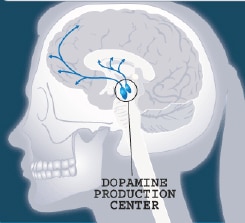
[Source]
In another study, a team of Vanderbilt scientists mapped the brains of “go-getters” and “slackers.” They found that people willing to work hard had higher dopamine levels in the striatum and prefrontal cortex — two areas known to impact motivation and reward. Among slackers, dopamine was present in the anterior insula, an area of the brain involved in emotion and risk perception.
As UConn Researcher John Salamone explains, “Low levels of dopamine make people and other animals less likely to work for things, so it has more to do with motivation and cost/benefit analyses than pleasure itself.”
How to hack your dopamine to boost your productivity
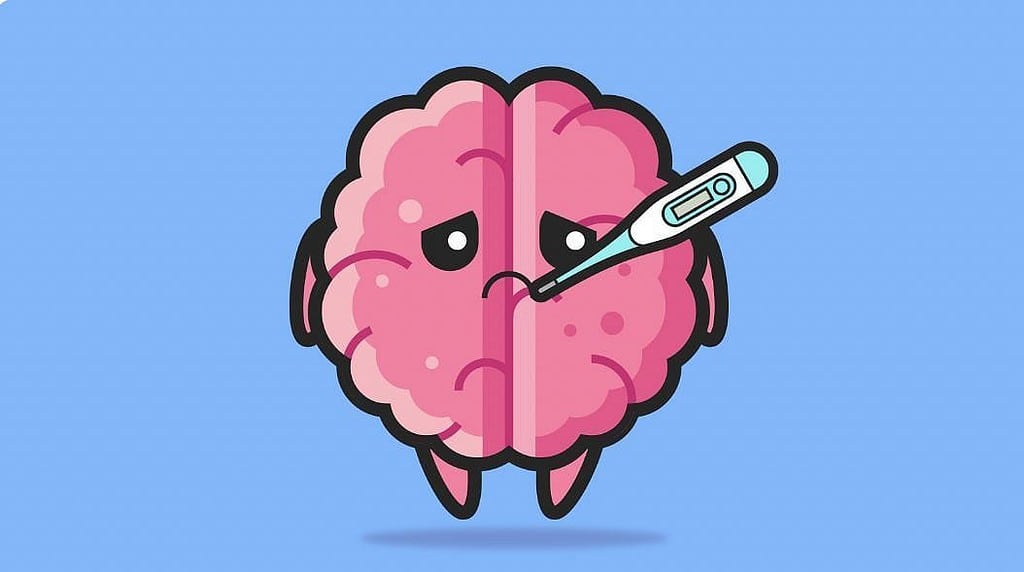
Motivation happens when your dopamine levels increase because you anticipate something important is about to happen. Here’s how it can affect your productivity.
Dopamine plays a pivotal role in the manifestation of attention deficit hyperactivity disorder, impacting impulse control and sustained attention.
The brain can be trained to thrive on bursts of dopamine from rewarding experiences, addressing any dopamine deficiency. You create the dopamine-rich environment; the brain does the rest.
One way to achieve those rewarding experiences is by setting incremental goals. Dopamine will flow as a result of your brain’s positive reinforcement every time you complete a step and meet a challenge.
Here’s how to get your dopamine flowing:
- Record small accomplishments. A to-do list (or a “digital done list”) reinforces how you’re chipping away at your goals. As you feel yourself making more progress, you’ll feel the greater effects of dopamine.
- Share results with your team. Communicating about your results (whether they’re positive or negative) means that others will recognize your work, resulting in more positive feedback. Praising and recognizing the work of your colleagues can also increase your dopamine.
- Stay on task with micro-deadlines. Staying entirely focused on one task at a time will force you to sit down and get work done. The more you do that, the more you’ll see positive feedback (via your work getting done), which will increase your dopamine levels.
- Focus on how great you’ll feel when your project is complete. A study by University of Michigan professors found that results-driven focus motivated people to complete their work.
- Test out new productivity tools to make overwhelming tasks more doable. Whether it’s an overflowing inbox, missed communications with teammates, juggling time zones, or trying to better connect with your customers, these tools can help you check things off your list faster, leading to a higher flow of dopamine.
Dopamine reuptake inhibitors increase brain dopamine levels for sure but you should keep your distance away from these medications and follow the 5 these I have mentioned above to raise dopamine levels.
More physical tricks to kick your dopamine levels into high gear

[Image via Giphy]
Dopamine has a biological connection to our motivation to achieve. You can increase your dopamine levels via positive feedback (which happens by tracking incremental progress). You can also spur your capacity to accomplish tasks by building healthful habits.
- Boost your diet with dopamine-filled foods. For an extra kick, make sure you’re eating food with plenty of natural probiotics, like yogurt and sauerkraut, and natural glucose, which occurs in raw fruits and nuts.
- Take a 10-minute nap. Research shows that 10 minutes is the optimal length. After that, “sleep inertia” can set in, making you sluggish and unproductive.
- Make a right brain/left brain switch. Anecdotal evidence shows that being able to flex both muscles — creative and analytical — can make you a more well-rounded worker. Take time to move between Excel and an art project or a creative brainstorming session and more straightforward quantitative tasks in order to build both sides of your brain and feel productive on many fronts.
- Get moving at midday. Even a 20-minute walk will yield positive results. And if you opt for a short, high-intensity workout, it can easily propel your low dopamine to new heights.
Elevate your health, and watch your potential for success and reaping rewards soar, all while managing dopamine deficiency. Try to remove negativity bias as much as possible.
You also need to keep in mind that, Engaging in constant thrill-seeking activities can flood your brain with too much dopamine. For example, Frequent caffeine consumption may result in the release of too much dopamine, leading to jitters and restlessness.
Take the first step

Effort remains part of the equation. Sometimes the cure for low motivation may simply be old-school determination and perseverance — sticking with doing things even when we don’t want to.
You can hack your dopamine, but without the extra effort, it can only take you so far. Through this lens, motivation can’t just be about increasing dopamine — it needs to be about digging deep and being diligent.
TL;DR
The article explores the neuroscience behind motivation, focusing on the role of the neurotransmitter dopamine. Contrary to popular belief, dopamine is linked not just to pleasure but also to motivation and stress.
The article provides practical tips for boosting motivation and productivity, such as setting incremental goals, tracking accomplishments, and sharing results with a team.
It also offers physical tricks like eating dopamine-rich foods and taking short naps. While dopamine plays a significant role in motivation, the article emphasizes that old-fashioned determination and effort are also crucial.
Popular Questions
- What is the role of dopamine in motivation?
Dopamine is a neurotransmitter that plays a pivotal role in motivation. It is part of the brain’s reward system, specifically influencing the mesolimbic pathway.
When dopamine levels increase in the nucleus accumbens, it helps your brain predict that something important is about to happen, thus boosting motivation. - How can I increase my dopamine levels for better productivity?
You need to increase dopamine levels naturally. For example, You can increase your dopamine levels through various methods such as setting incremental goals, recording small accomplishments, and staying focused on one task at a time with micro-deadlines.
Sharing results and getting positive feedback can also spike your dopamine levels. - Is dopamine only related to pleasure?
Contrary to popular belief, dopamine is not solely linked to pleasure. It also spikes in moments of high stress, and its primary role is to encourage us to act, either to achieve something good or to avoid something bad. - What foods can boost dopamine levels?
Foods rich in natural probiotics like yogurt and sauerkraut, as well as natural glucose found in raw fruits and nuts, can help boost your dopamine levels. - How does the brain’s structure affect motivation?
The brain’s mesolimbic pathway, which originates from the middle of the brain and branches to various locations like the cerebral cortex, is the most crucial reward pathway.
An increase in dopamine in the nucleus accumbens, one of the mesolimbic stops, can trigger a feedback loop for predicting rewards and enhancing motivation. - What are some quick ways to boost productivity?
Some quick ways include taking a 10-minute nap, switching between creative and analytical tasks, and incorporating physical movement like a 20-minute walk or a high-intensity workout to kick your dopamine into high gear. - Can focusing on the end result improve motivation?
Yes, a results-driven focus can motivate people to complete their work, as found in a study by University of Michigan professors. - Are ‘go-getters’ and ‘slackers’ different in terms of brain chemistry?
According to a study by Vanderbilt scientists, ‘go-getters’ had higher dopamine levels in areas of the brain known to impact motivation and reward, while ‘slackers’ had dopamine present in the anterior insula, which is involved in emotion and risk perception. - How can tracking small wins boost my motivation?
Tracking small wins or accomplishments through a to-do list can result in positive reinforcement, which can, in turn, increase dopamine flow and boost motivation. - What’s the link between physical activity and dopamine?
Physical activity, even as simple as a 20-minute walk, can increase your dopamine levels. High-intensity workouts can propel your dopamine to new heights, enhancing your motivation and productivity.
Glossary
- Motivation: The psychological drive or incentive to achieve a goal or complete a task.
- Neurotransmitter: Chemical substances in the brain that transmit signals between neurons.
- Dopamine: A neurotransmitter that plays a vital role in motivation and reward mechanisms in the brain.
- Neuron: A nerve cell that transmits information through electrical signals.
- Synapse: The junction between two neurons where chemical signals (neurotransmitters) are transmitted.
- Mesolimbic Pathway: A dopamine pathway in the brain that originates from the middle and branches out to various regions, playing a critical role in the reward system.
- Nucleus Accumbens: A region in the brain that forms part of the mesolimbic pathway and is activated by dopamine release, affecting motivation and reward prediction.
- Striatum: A region in the brain associated with motivation, reward, and motor control.
- Prefrontal Cortex: The front part of the frontal lobe of the brain, implicated in complex cognitive behaviors like planning, decision-making, and moderating social behavior.
- Anterior Insula: A brain region involved in emotions and risk perception.
- Cost/Benefit Analysis: Evaluate the advantages and disadvantages of different options to determine the most favorable one.
- Incremental Goals: Small, achievable objectives set as stepping stones toward achieving a larger goal.
- To-Do List: A list of tasks to be completed, often used as a productivity tool.
- Digital Done List: An electronic version of a to-do list, emphasizing completed tasks to generate a sense of accomplishment.
- Micro-Deadlines: Small, specific time limits set for completing particular tasks to improve focus and productivity.
- Results-Driven Focus: A concentration on a project’s outcome or end result as a source of motivation.
- Probiotics: Beneficial bacteria in certain foods like yogurt and sauerkraut can contribute to gut health and affect brain function.
- Glucose is a simple sugar that provides energy naturally found in fruits and other foods.
- Sleep Inertia: The feeling of grogginess or sluggishness if a nap extends beyond the optimal length.
- Physical Movement: Physical activity like walking or high-intensity workouts is suggested to improve mood and motivation.
- Perseverance: The quality of trying to achieve a particular aim despite difficulties.
- Diligence: Careful and persistent work or effort.

